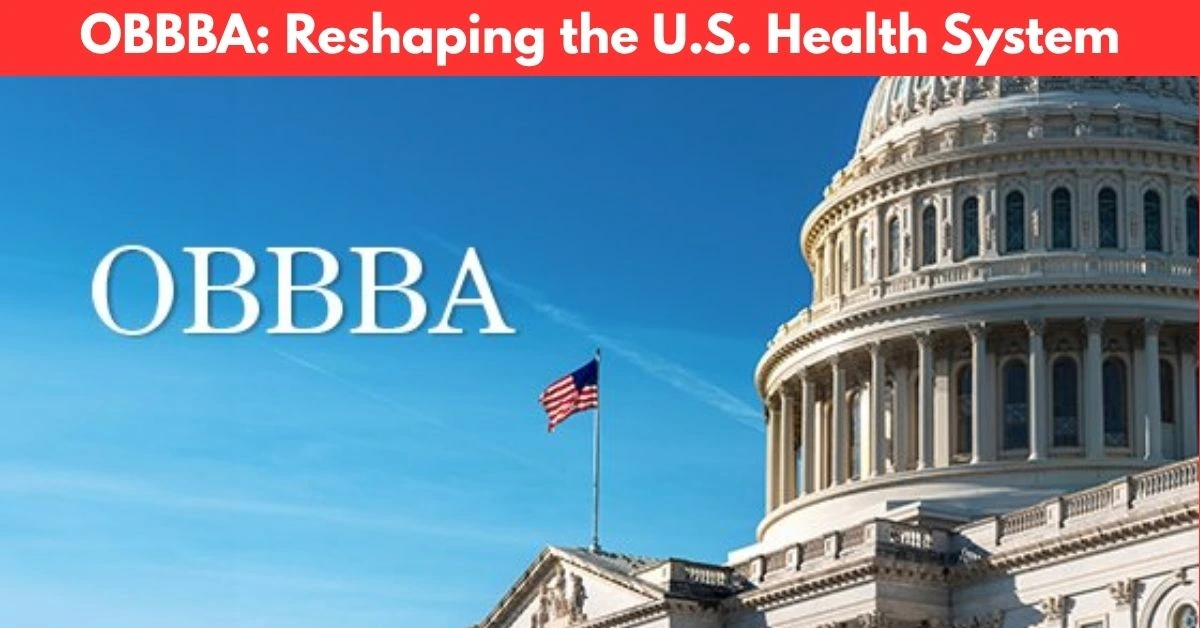The One Big Beautiful Bill Act (OBBBA), signed July 4, 2025, marks a sweeping shift in U.S. healthcare policy. By reshaping Medicaid and rolling back key provisions of the Affordable Care Act (ACA), OBBBA is projected to reduce federal healthcare spending by $1 trillion through FY2034. The Act tightens eligibility for government health plans, reforms Medicaid funding mechanisms, and eliminates ACA premium subsidies, placing significant financial and operational pressures on payers, providers, and states.
Key Provisions & Their Impact
Medicaid and ACA Changes
- Medicaid:
- Introduction of stricter eligibility and community engagement (work) requirements.
- Administrative procedures around enrollment tightened, increasing complexity for patients and providers.
- States face limits on provider taxes and state-directed payments, requiring new strategies for funding.
- ACA Marketplace:
- Ending of Advanced Premium Tax Credits (APTC), likely increasing premiums for many enrollees and prompting coverage losses, especially among healthier, price-sensitive consumers.
- Narrowed eligibility and shorter enrollment periods increase the uninsured rate and market risk for payers.
Budgetary and Funding Impacts
- Federal healthcare spending is trimmed by $1 trillion over the next decade.
- Cuts to Department of Health and Human Services (HHS) funding (estimated 25% reduction in the FY2026 budget) amplify operational pressures on all healthcare stakeholders.
- Reduced financial flexibility for states, leading to varied Medicaid benefits and coverage across the country.
Payers: Facing New Pressures
- Medicaid Managed Care Orgs (MCOs):
- Face reduced funding, higher member churn, and operational complexity.
- Must collaborate with states to prioritize optional benefits amid constrained resources.
- May exit unprofitable markets or pursue M&A activity1.
- Marketplace Insurers:
- Risk pool destabilization as healthy members leave due to higher premiums and fewer subsidies.
- Need to invest in staff and tech to support enrollment and retention under stricter rules.
Providers: Financial and Operational Strain
- Hospitals and Health Systems:
- Increased uncompensated care as millions lose eligibility for coverage.
- New Medicaid eligibility rules increase administrative workload.
- Rural and underfunded hospitals receive some relief through a $50B stabilization fund, but long-term success relies on technology and operational transformation over mere funding increases1.
- Contracting Shifts:
- Likely to pursue better contracts with commercial insurers to offset growing numbers of uninsured patients.
Biopharma & Life Sciences: R&D, Investment, and Tax Implications
- Short-term reduction in federal/payer drug spending due to increased uninsured population could diminish revenue and R&D investment.
- The IRA’s Medicare Drug Price Negotiation (MDPN) “orphan drug” fix benefits some, but broader cost pressures persist.
- Manufacturing incentives: 100% bonus depreciation for domestic property, restored deductibility for R&D expenses, and new rules for manufacturing facility costs—all designed to drive U.S. pharmaceutical investment.
States: Fragmented Safety Net
- Expansion States:
- Most affected by new Medicaid work requirements and potential loss of optional benefits.
- Non-Expansion States:
- Hit harder by elimination of ACA subsidies—coverage for low-income adults (34%-100% FPL) further jeopardized.
| Change | Expansion State Impact | Non-Expansion State Impact |
|---|---|---|
| Medicaid work requirements | Severe: larger populations | Mild: fewer on Medicaid |
| APTC elimination | Moderate: 139%-400% FPL loss | Severe: Affordability collapse, wider gaps |
| Coverage gap expansion | No gap: Medicaid at 138% FPL | Exposed: wider gap, more uninsured |
Source: PwC analysis of OBBBA and CBO data.
No-Regret Actions for Health Stakeholders
- For Payers:
- Invest in technology for enrollment/eligibility tracking.
- Reassess market participation, consider mergers, prioritize member retention.
- For Providers:
- Optimize revenue cycle management and coverage verification.
- Expand patient engagement on coverage changes, especially for Medicaid and uninsured patients.
- For Manufacturers:
- Prioritize operational efficiency, model tax impacts, consider new partnerships.
Forward-Looking Trends
Technological transformation, personalized care, and prevention will be essential in an environment where coverage is fragmented and funding squeezed. The OBBBA’s phased provisions require scenario planning, investment in IT and analytics, and a shift from reactive care to proactive, preventive delivery models1.
Key OBBBA Impacts on U.S. Healthcare
| Stakeholder | Immediate Challenge | Recommended “No-Regret” Actions |
|---|---|---|
| Medicaid Plans | Reduced funding, churn, complexity | Partner with states, focus on enrollment |
| Hospitals/Providers | More uninsured, higher uncompensated | Tech/billing upgrades, patient outreach |
| Pharma/Life Science | Lower short-term spend, policy shifts | Operational efficiency, tax optimization |
| States | Less flexibility, higher admin demand | Prioritize benefits, upgrade IT systems |
Conclusion
OBBBA signals a transformative, possibly tumultuous, decade for U.S. healthcare. Fragmentation, funding cuts, and stricter eligibility will challenge every corner of the industry. Stakeholders that embrace innovation, invest in operational resilience, and focus on preventive care will be best positioned to adapt—and to thrive.

